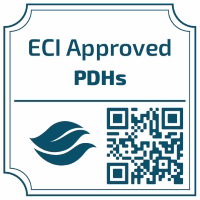Back
Claim Credit Verification Code: 2029
One (1) Hour Workshop
Stormwater Management
Soil Health Practices and Field Assessment - Benefits for Vegetation Establishment and Stormwater Management
Thursday, February 27, 2025
8:00 AM – 9:00 AM ET
Location: E11C
CE: 1 PDH
Level of Presentation: Intermediate

Warren S. Tuel, PSS
Erosion Control Specialist
Minnesota Department of Transportation
St. Paul, Minnesota, United States
Presenter(s)
Minesota Department of Transportation (MnDOT) has been researching the benefits of soil amendments such as compost to improve topsoil quality and to promote quicker vegetation establishment on construction sites. The research and field implementation has also shown the potential for stormwater management benefits resulting from soil health practices. This workshop will discuss the research conducted in 2023-2024 at the MnROAD Research Facility as well as how soil amendments have performed on some recent MnDOT projects. This presentation will also explore how soil health can contribute to stormwater management and how soil health practices can be an integral part of Green Infrastructure pursuits. The workshop will present an overview of what soil health is and the interaction between healthy soils and vegetation. The presentation will also discuss methods to evaluate soil health in the field exploring a number of soil health indicators that can be observed in the field as well as laboratory testing options to assess soil health. The presentation will also include the potential benefits of soil health practices and how this may contribute to climate resiliency on roadsides. Participants will come away with a greater understanding of how soil health practices combined with healthy native vegetation can help roadsides to withstand both drought conditions and extreme rainfall events which have become more common.
Full Abstract: This workshop will give an overview of MnDOT research on using compost as a soil amendment to promote more rapid vegetative growth and how this will allow projects to terminate their Construction Stormwater Permits more quickly. The presentation will include a discussion on why MnDOT is interested in promoting soil health practices on their road construction projects and the potential benefits of these practices in terms of reduced maintenance, improved stormwater management/treatment and how investing in soil health is an actual infrastructure improvement to site soil quality that will not just benefit the current project but future projects as well. The presentation will also include some basic fundamentals of soil health and the role of soil micro and macro-organisms and their interactions with plants roots and how they contribute to nutrient cycling and the overall soil food web.
The workshop will include methods for assessing soil health in the field such as visual assessment, soil odor, Solvita testing, visual assessment of aggregate stability, visual indicators of porosity and assessing existing vegetation pre-construction. I'll also present on how MnDOT uses soil compaction probes to assess compaction and ability for soils to infiltrate stormwater and the benefits of decompaction practices of the subsoil before topsoil is installed. The presentation will also address soil health testing services provided by the soil testing labs such as the Cornell Soil Health Laboratory and what their test reports look like. I'll also present on to some of the options available through soil testing laboratories located in Minnesota. We will discuss MnDOT's efforts to promote Green Infrastructure practices which treat stormwater close to where it falls on the surface to take some of the burden off of stormwater management infrastructure which can be crucial with the increase in larger more intense storm events. This is all part of MnDOT's efforts to restore the natural water cycle in its Right of Ways which is also one of the primary goals of green infrastructure.
The presentation will also look at measures that can be taken to preserve topsoil quality on construction projects by performing construction practices to preserve soil quality and minimize impacts to soil biology during construction and innovative ways MnDOT is using topsoil as a construction BMP for erosion and sediment control. I'll also discuss how increased organic matter in topsoil increases the overall water holding capacity of topsoil which benefits vegetation and climate resiliency of roadside vegetation. There can also be a discussion on the potential climate change mitigation in terms of the potential to sequester carbon on road right of ways by increasing organic matter of topsoil and root mass using native vegetation. The resulting climate resiliency in using these practices will also be a part of the presentation.
Full Abstract: This workshop will give an overview of MnDOT research on using compost as a soil amendment to promote more rapid vegetative growth and how this will allow projects to terminate their Construction Stormwater Permits more quickly. The presentation will include a discussion on why MnDOT is interested in promoting soil health practices on their road construction projects and the potential benefits of these practices in terms of reduced maintenance, improved stormwater management/treatment and how investing in soil health is an actual infrastructure improvement to site soil quality that will not just benefit the current project but future projects as well. The presentation will also include some basic fundamentals of soil health and the role of soil micro and macro-organisms and their interactions with plants roots and how they contribute to nutrient cycling and the overall soil food web.
The workshop will include methods for assessing soil health in the field such as visual assessment, soil odor, Solvita testing, visual assessment of aggregate stability, visual indicators of porosity and assessing existing vegetation pre-construction. I'll also present on how MnDOT uses soil compaction probes to assess compaction and ability for soils to infiltrate stormwater and the benefits of decompaction practices of the subsoil before topsoil is installed. The presentation will also address soil health testing services provided by the soil testing labs such as the Cornell Soil Health Laboratory and what their test reports look like. I'll also present on to some of the options available through soil testing laboratories located in Minnesota. We will discuss MnDOT's efforts to promote Green Infrastructure practices which treat stormwater close to where it falls on the surface to take some of the burden off of stormwater management infrastructure which can be crucial with the increase in larger more intense storm events. This is all part of MnDOT's efforts to restore the natural water cycle in its Right of Ways which is also one of the primary goals of green infrastructure.
The presentation will also look at measures that can be taken to preserve topsoil quality on construction projects by performing construction practices to preserve soil quality and minimize impacts to soil biology during construction and innovative ways MnDOT is using topsoil as a construction BMP for erosion and sediment control. I'll also discuss how increased organic matter in topsoil increases the overall water holding capacity of topsoil which benefits vegetation and climate resiliency of roadside vegetation. There can also be a discussion on the potential climate change mitigation in terms of the potential to sequester carbon on road right of ways by increasing organic matter of topsoil and root mass using native vegetation. The resulting climate resiliency in using these practices will also be a part of the presentation.
Learning Objectives:
At the conclusion of this presentation, attendees will:
- Recognize methods for assessing soil health in the field using basic visual observations and field-testing tools. The learner should come away with an understanding of the many benefits of implementing soil health practices such as improved habitat for vegetation and the fauna that rely on this vegetation for habitat as well as the improved habitat in the soil for macro and micro-organisms including beneficial insects, bacteria and fungi that are all a critical part of the soil food web.
- The learner should come away with an understanding of how to assess the quality and health of existing topsoil at a site and whether or not soils require amendments as well as construction practices to preserve soil health.
- The learner should come away from the presentation with an understanding of the importance of soil health practices in management of stormwater as well as the potential benefit of improving climate resiliency on construction sites which is important in times of recent storm events with increased rainfall amounts and intensity. One of the themes of this presentation would be that infrastructure projects can be stormwater management opportunities with the correct construction practices which are typically low cost and with significant impact to soil health and stormwater management.

.jpg)


